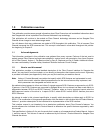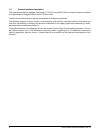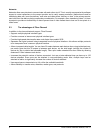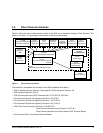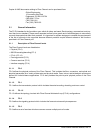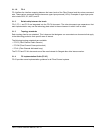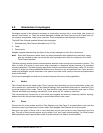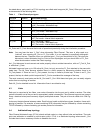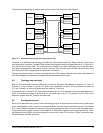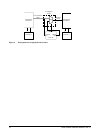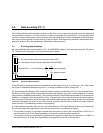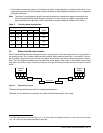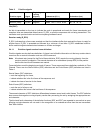
Fibre Channel Interface Manual, Rev. D 9
4.0 Introduction to topologies
Topologies include all the elements necessary to successfully connect two or more nodes (also known as
devices). See Section 4.1. There are several topologies available with Fibre Channel, but all of them have cer-
tain common components: nodes, ports, and links. These components are discussed in this section.
The ANSI Fibre Channel standard defines three topologies:
1. Arbitrated loop (Fibre Channel Arbitrated Loop, FC-AL)
2. Fabric
3. Point-to-point
Seagate supports arbitrated loop and fabric as the primary topologies for disc drive connections.
Note. Some brief discussions about items not directly associated with arbitrated loop and fabric topolo-
gies are included to make you aware that other topologies exist within the constructs of the ANSI
Fibre Channel standard.
The fabric topology permits dynamic interconnections between nodes through ports connected to a fabric. This
fabric is similar to a switch or router and is often compared to a telephone system because of its redundant
rerouting capabilities. The fabric topology also allows multiple connections simultaneously, unlike FC-AL which
results in a single circuit being established between only two ports at any one particular time. Fabric and arbi-
trated loop topologies may be combined in one system to provide a wide variety of services and performance
levels to the nodes.
Point-to-point topologies are used only to connect two ports without any routing capabilities.
4.1 Nodes
Fibre Channel devices are called nodes. This is a generic term describing any device (workstation, printer, disc
drive, scanner, etc.) connected to a Fibre Channel topology. Each node has at least one port, called an N_Port
to provide access to other nodes. The “N” in N_Port stands for node. As you will see later, ports used in a Fibre
Channel Arbitrated Loop topology are called NL_Ports where the “NL” stands for node loop.
The components that connect two or more node ports together are what are collectively called a topology.
Nodes work within the provided topology to communicate with all other nodes.
4.2 Ports
Ports are the link to the outside world for a Fibre Channel node. See Figure 2. As stated above, each node has
at least one port to provide access to other nodes. Each Seagate Fibre Channel drive has two ports.
Each port uses a pair of fibers—one to carry information into the port and one to carry information out of the
port. This pair of fibers (actually copper wire) is called a “link” and is part of each topology. The Fibre Channel
ANSI specification also supports fibers made of optical strands as a medium for data transfer.



